Part II – The Rums
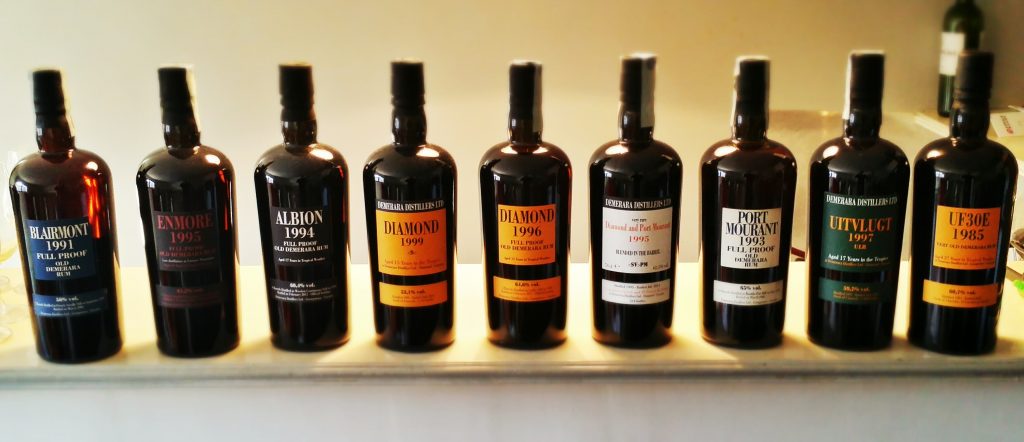
Photograph (c) Rumclubfrancophone.fr
2005 – The Age Begins
In Part 1 I gave a rather lengthy rundown of the events and trends leading up to the unofficially named Age. There was a reason for that – because I wanted to make it clear how the rum landscape was altered after those rums were issued. And to do that we needed to get a sense of what it was like before.
To briefly recap, the pieces were in place, at the intersection of culture and history and personality:
- the world was becoming more interconnected and knowledgeable as a result of the proliferation of internet enabled websites and blogs, books being written and the Ministry of Rum website; in short, communications had undergone a sea change.
- rums had moved from being primarily blends and cocktail fodder to sharing space on shelves with generously aged expressions;
- people were starting to know more and had more choice; independent bottlers helped move that along, as did the emergent rum festival scene started by the Miami Rum Renaissance
- and Luca Gargano, having bought a small Genoese spirits-distribution concern, started issuing a relatively large number of Guyanese rums, which were relatively unsucessful but which crystallized his thinking on what he felt the characteristics of good rums were.
Now, we could argue that since the world was ripe for an expansion of cask strength single editions from all points of the compass (the concept was not, after all, particularly new), that Luca Gargano just did it with more verve and panache, and that everyone else was going to do it anyway. The development was inevitable. History is replete with stories of groundbreaking ideas being developed simultaneously in multiple places (Newton and Leibnitz with calculus; Darwin and Wallace with evolution; Einstein and Hilbert with relativity…and so on).
Maybe so. But I argue that nobody ever did it better, or in such volume and he was there at the right time with the right rums, just as interest was catching on. The rumworld was ready for something new and interesting and dynamic, and Luca filled the niche both in what he produced and who he was.
The Rums, by date of issue
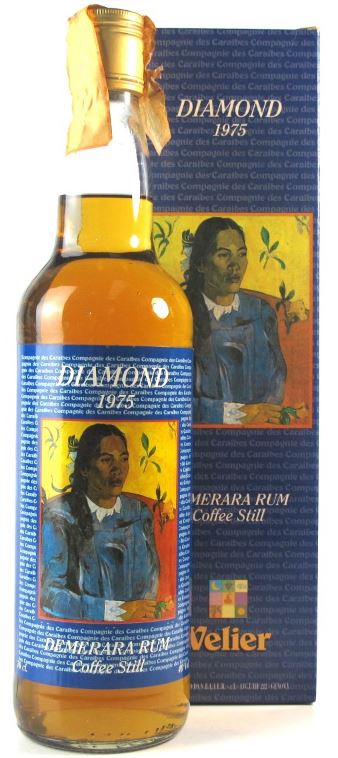 As noted in Part 1, after a few years of developing the company and broadening its portfolio, Velier began its move to craft spirits in 1992 (which may not be a coincidence), by beginning its selection of barrels of rum for its brand. This led, in 1996, to the issuance of three Guyanese rums – all issued at 40% (see next paragraph) and using a third partly bottler (Thompson & Co.). All were continentally aged.
As noted in Part 1, after a few years of developing the company and broadening its portfolio, Velier began its move to craft spirits in 1992 (which may not be a coincidence), by beginning its selection of barrels of rum for its brand. This led, in 1996, to the issuance of three Guyanese rums – all issued at 40% (see next paragraph) and using a third partly bottler (Thompson & Co.). All were continentally aged.
Note the two editions of the Diamond 1975 at different strengths. I double checked the labels and the images, and yes they clearly note the separate ABV. This then was the first demonstration of something Velier would become famous for: issuing the same rum at varying power (though likely from different casks), which culminated in the multitudinous variations of the Caronis that so amuse, enthrall and irritate the accountants.
- Diamond 1975 20 YO (1975 – 1996), 40%
- Diamond 1975 20 YO (1975 – 1996), 46%
- Port Mourant 1985 21YO (1985 – 1996) 40%
- Versailles 1991 5 YO (1991 – 1996), 40%
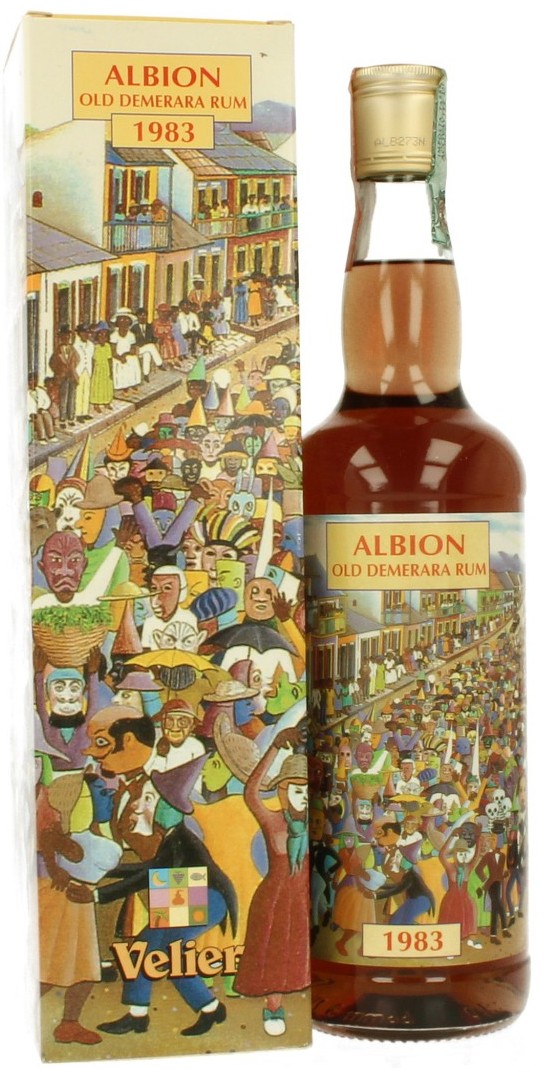 Luca was dissatisfied with this, and four years later tried again, with three more rums from Guyana. These were bottled by a Holland-based subsidiary of DDL themselves (called Breitenstein), because by this time Velier’s association with DDL had become much firmer and it was felt to be more cost effective – though they remained continentally aged. Of particular note was Luca’s find of the LBI marque, quite rare, though which still produced it remains an open question. The Enmore also comes in for mention because of its strength – it was the first attempt to issue at full proof…why he did not follow on from this concept here is unknown, but considering that the Damoiuseau 1980 only got released two years later, perhaps it was nerves, or caution, or simply a lack of confidence (though that would seem doubtful to anyone who’s ever met the man).
Luca was dissatisfied with this, and four years later tried again, with three more rums from Guyana. These were bottled by a Holland-based subsidiary of DDL themselves (called Breitenstein), because by this time Velier’s association with DDL had become much firmer and it was felt to be more cost effective – though they remained continentally aged. Of particular note was Luca’s find of the LBI marque, quite rare, though which still produced it remains an open question. The Enmore also comes in for mention because of its strength – it was the first attempt to issue at full proof…why he did not follow on from this concept here is unknown, but considering that the Damoiuseau 1980 only got released two years later, perhaps it was nerves, or caution, or simply a lack of confidence (though that would seem doubtful to anyone who’s ever met the man).
- Albion 1983 17 YO (1983 – 2000) 40%
- Enmore 1987 13 YO (1987 – 2000), 56.6%
- La Bonne Intention 1985 15 YO (1985-2000), 40%
 By the time the third batch of rums was issued in 2002, now all at 46%, Luca knew something had to change. While he was happy with the ages of the rums — on three separate occasions rums had been released at close or equal to 20 years — they were continentally aged and simply not exciting enough, unique enough, in a field where other independents were issuing similar versions, if not in such quantity. But they were all sipping at one well, that of the European brokers, and he felt he had to get his rums from the source. It was this 2002 series that began to do exactly that: all three rums were fully tropical-aged and selected directly from DDL’s Guyana warehouse, which was a first for any independent bottling to that time. Luca himself dates the Age from this release season, though he admits he lacked the courage to go completely full-proof for it, and told me that Yesu Persaud would probably not have countenanced it either at the time.
By the time the third batch of rums was issued in 2002, now all at 46%, Luca knew something had to change. While he was happy with the ages of the rums — on three separate occasions rums had been released at close or equal to 20 years — they were continentally aged and simply not exciting enough, unique enough, in a field where other independents were issuing similar versions, if not in such quantity. But they were all sipping at one well, that of the European brokers, and he felt he had to get his rums from the source. It was this 2002 series that began to do exactly that: all three rums were fully tropical-aged and selected directly from DDL’s Guyana warehouse, which was a first for any independent bottling to that time. Luca himself dates the Age from this release season, though he admits he lacked the courage to go completely full-proof for it, and told me that Yesu Persaud would probably not have countenanced it either at the time.
As an aside, attention should be drawn to the label design – each release season (1996, 2000 and 2002) is clearly distinct from the others. The wild and joyously near-abstract paintings echoed local artists, and we would not see their like again until Simeon Michel was contracted to provide the artwork for the clairins many years later.
- Albion 1984 18 YO (1984 – 2002), 46%
- Diamond 1982 20 YO (1982 – 2002), 46%
- Port Mourant 1982 20YO (1982 – 2002), 46%
My feeling is that the classic portion of the Age started in 2005. The now famous black bottles and simplified labels were introduced in that year and remained constant for nearly a decade. The level of detail on those labels was unprecedented, by any maker, at any time, for any rum. For the first time consumers got the year of distillation and bottling; the casks, the outturn, the strength, the still and the marque, even (sometimes) the angel’s share. And serious strength was on display for once, real full proof, from-the-barrel power.
In the years leading up to 2005, Luca forged a firm personal alliance with DDL (and its chairman, Yesu Persaud). They showed him select barrels from their ageing warehouse and he chose some to bottle. 2005’s Diamond and Uitvlugt releases are considered good rums but they were relatively young and lacked an element of gravitas. But one day as he was walking with Mr. Persaud through the ageing warehouse, he spotted five or six barrels mouldering quietly in a corner. They were from a long defunct distillery of the Skeldon estate (the easternmost estate in Guyana – the distillery is long closed though it still makes sugar), and their age took his breath away. He tried the 1973 and it was such an impressive dram that he almost begged to be allowed to bottle it as it was. For the only time in this partnership, permission was granted and he was allowed bottle all the barrels himself, and the 1973 proved to be one of the most amazing rums ever issued (myth has it that he also got the single barrel of the Caputo 1973 at this time, but that’s another story entirely).
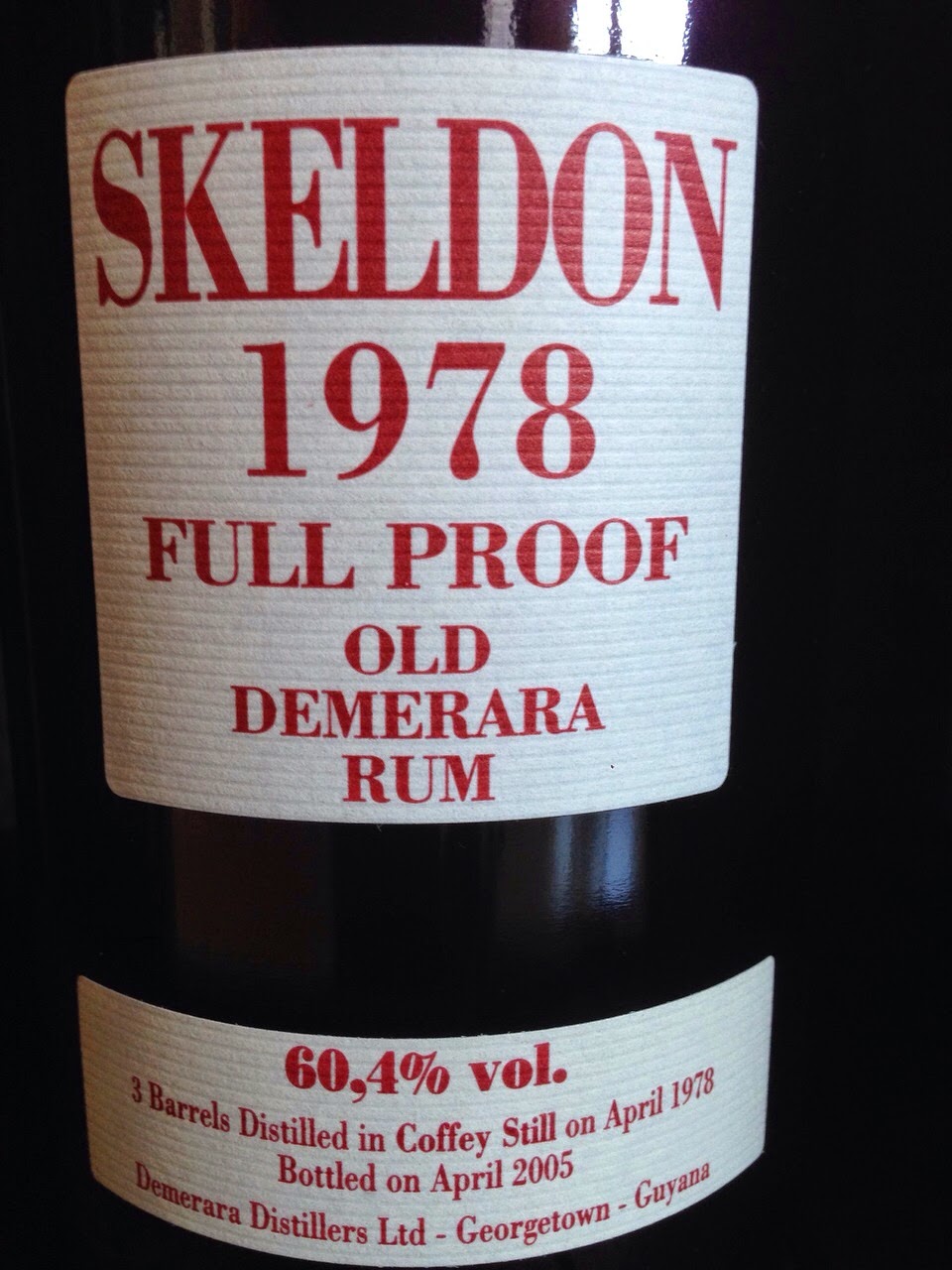
Photo (c) Barrel-Aged-Mind
The three barrels of the Skeldon 1978 were a different matter. There was insufficient volume to make a decent outturn (whatever that might mean, given that the 1973 only produced 544 bottles from four barrels), and so it was mixed in with some 1973 — and therefore this is a blend, not a rum conforming to Velier’s usual standards. Still, all of these rums were tropically aged and released at cask strength, and this was what he wanted. (I have heard another story that DDL themselves blended the 1973 and 1978 and didn’t tell him, admitting it only when pressed because he recognized a difference in the profile after the fact).
- 2005 Diamond 1993 12YO (1993 – 2005), 61.4%
- 2005 Skeldon 1973 32 YO (1973 – 2005) 60.5%
- 2005 Skeldon 1978 27 YO (1978 – 2005) 60.4%
- 2005 Uitvlugt 1988 17 YO (1988 – 2005), 52.9%
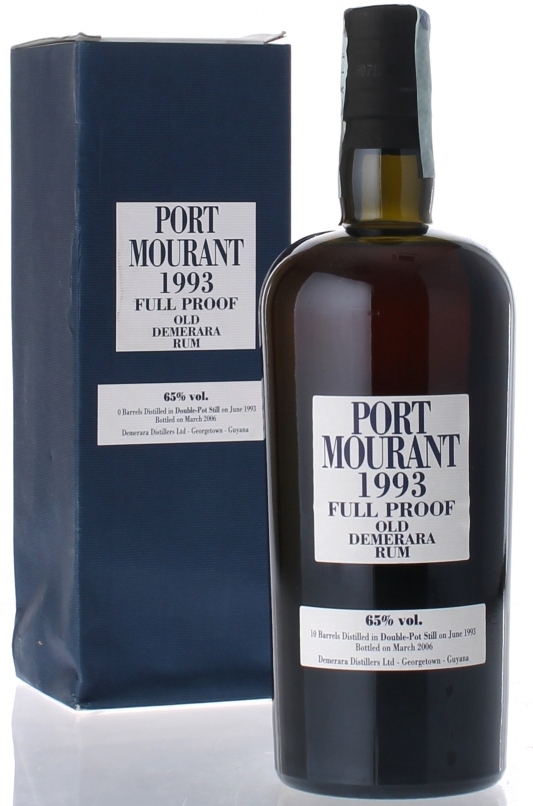 2005 and 2006 together saw the issuance of not only eight different Guyanese rums but nine and eight Caronis respectively. None of these received especially wide acclaim or attention, though my feeling is that the 1991 Blairmont was definitely one of the better rums I’ve tried from the stable and the one occasion I tried (without notes) the PM 1993, it was equally impressive, though relatively young compared to its siblings issued in those two years.
2005 and 2006 together saw the issuance of not only eight different Guyanese rums but nine and eight Caronis respectively. None of these received especially wide acclaim or attention, though my feeling is that the 1991 Blairmont was definitely one of the better rums I’ve tried from the stable and the one occasion I tried (without notes) the PM 1993, it was equally impressive, though relatively young compared to its siblings issued in those two years.
- 2006 Blairmont 1991 15 YO (1991 – 2006), 56%
- 2006 Diamond 1988 18 YO (1988 – 2006), 56%
- 2006 Port Mourant 1993 13 YO (1993 – 2006), 65%
- 2006 Uitvlugt 1985 21 YO (1985 – 2006), 66%
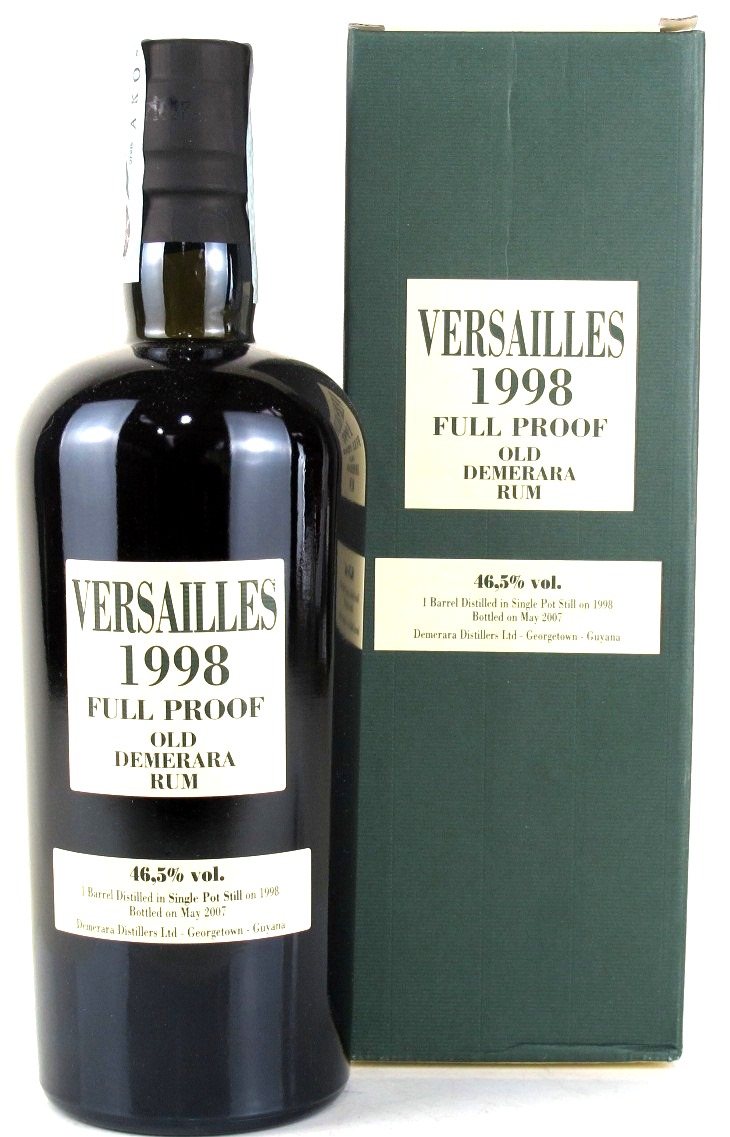 2007 was an odd year, when everything issued was under ten years old, which may just have been a function of what was put in front of Luca to inspect and select. The first Versailles rum since 1996 was issued in 2007, and somehow another LBI rum was found – it would prove to be the last.
2007 was an odd year, when everything issued was under ten years old, which may just have been a function of what was put in front of Luca to inspect and select. The first Versailles rum since 1996 was issued in 2007, and somehow another LBI rum was found – it would prove to be the last.
In this year some of the first reviewing websites began to go live: however, these were primarily American, with one – Refined Vices – from Australia, and showed the slowly building interest in quality rums (perhaps also aided by the Miami Rum Renaissance which started around this time). But while rums commonly available in North America formed the bulk of the writing on such sites at this stage, the European bottlings Velier was making received little or no attention, and remained on sale primarily in Italy.
- 2007 Enmore 1998 9YO (1998 – 2007), 64.9%
- 2007 La Bonne Intention 1998 9YO (1998 – 2007), 55.6%
- 2007 Versailles 1998 9YO (1998 – 2007), 46.5%
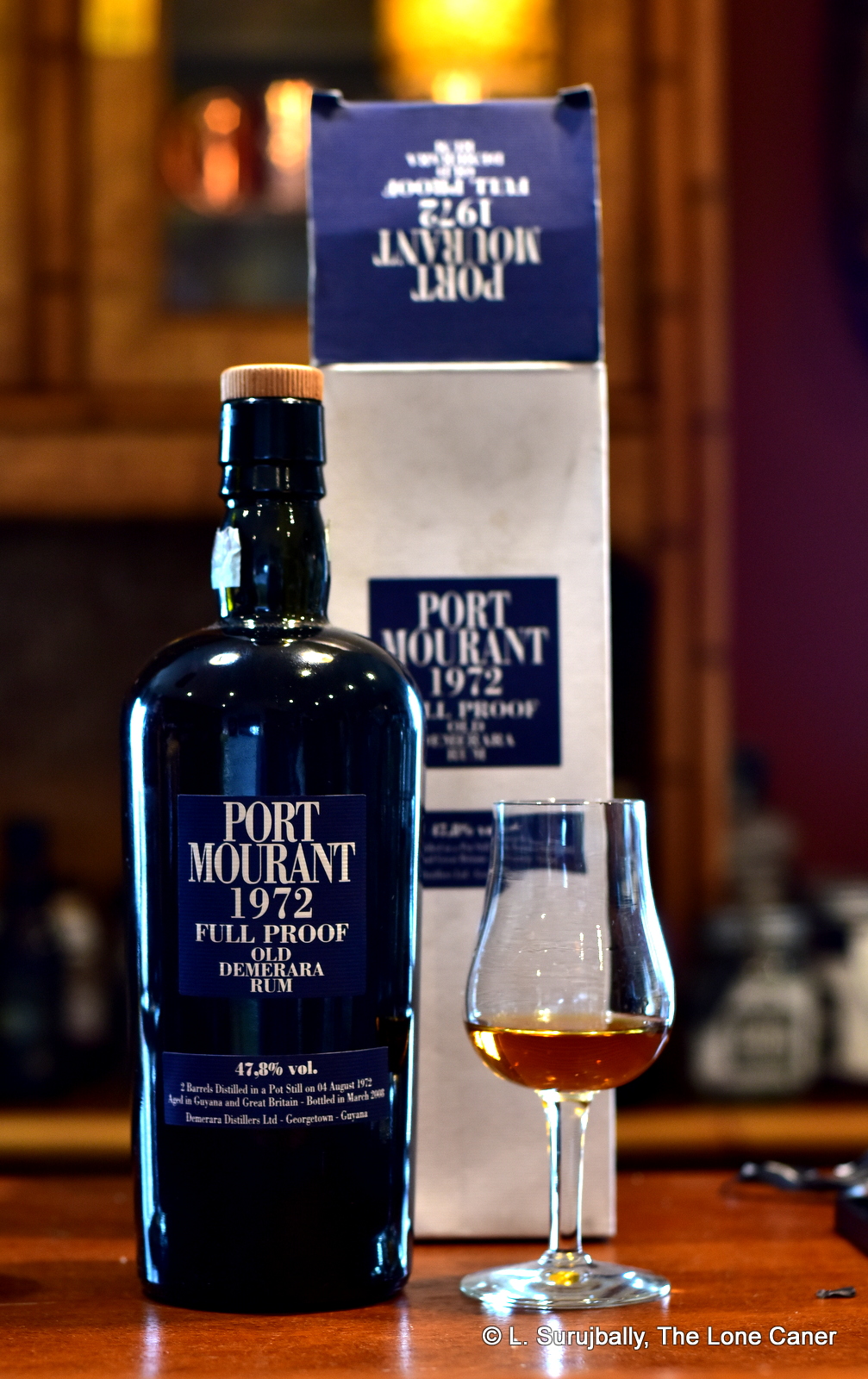 When it came to releases, 2008 was a banner year for the company, when eight Demerara rums were issued at once. Yet widespread acceptance remained elusive: costing out at over a hundred euros per bottle, most consumers in Europe, where distribution was primarily limited, felt this was still to expensive (bar the Italians, who I was told were snapping them up). One can only imagine how frustrating this must have been to Luca, who knew how good they were. The standouts from this year’s collection were undoubtedly those amazing 1970s Port Mourants, which are now probably close to priceless, if they can even be found. (And even the others are becoming grail quests – I saw an online listing in June 2018 for the Albion 1983, at close to two thousand euros).
When it came to releases, 2008 was a banner year for the company, when eight Demerara rums were issued at once. Yet widespread acceptance remained elusive: costing out at over a hundred euros per bottle, most consumers in Europe, where distribution was primarily limited, felt this was still to expensive (bar the Italians, who I was told were snapping them up). One can only imagine how frustrating this must have been to Luca, who knew how good they were. The standouts from this year’s collection were undoubtedly those amazing 1970s Port Mourants, which are now probably close to priceless, if they can even be found. (And even the others are becoming grail quests – I saw an online listing in June 2018 for the Albion 1983, at close to two thousand euros).
- Albion 1983 25 YO (1983 – 2008), 46.4%
- Albion 1989 19 YO (1989-2008), 62.7%
- Enmore 1988 19 YO (1988 – 2008), 51.9%
- Enmore 1990 18 YO (1990 – 2008), 61%
- Port Mourant 1972 36 YO (1972 – 2008) 47.8%
- Port Mourant 1974 34 YO (1974 – 2008) 54.5%
- Port Mourant 1975 32 YO (1975 – 2008) 56.7%
- Uitvlugt 1990 17 YO (1990 – 2008), 66%
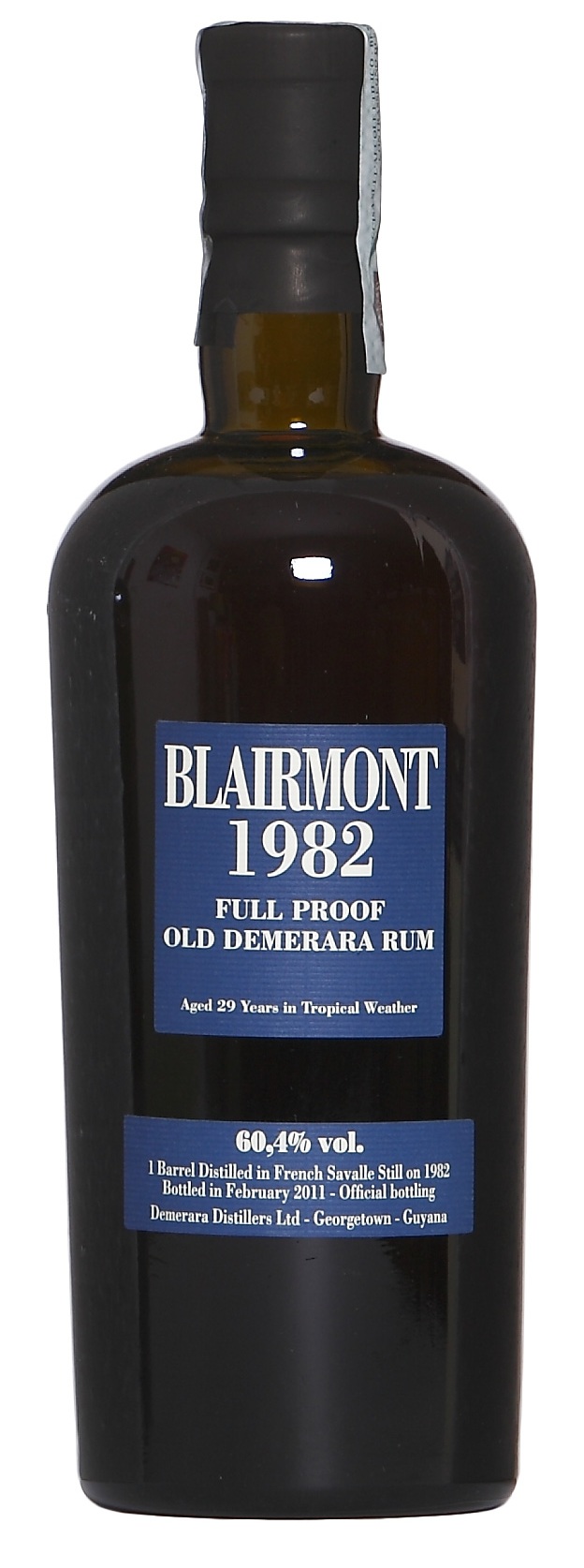 Something interesting happened in 2010, overlooked by many, ignored by the rest. For the first time reviews of the Velier Demeraras start to appear in the blogosphere, and they were all from Serge Valentin of Whiskyfun. He had begun in 2009 with a raft of generally available rums, and in 2010 issued his first review of Velier rums — Enmore 1988 and 1990, Albion 1989, Uitvlugt 1990 and Blairmont 1991. And…nobody noticed; those who did hardly cared. He was a whisky guy daring to dabble in rums? Shame on him. The reviews sank out of sight; nobody else would write about these spectacular rums for nearly three years and modesty be damned, when the next round of reviews were published, they were mine.
Something interesting happened in 2010, overlooked by many, ignored by the rest. For the first time reviews of the Velier Demeraras start to appear in the blogosphere, and they were all from Serge Valentin of Whiskyfun. He had begun in 2009 with a raft of generally available rums, and in 2010 issued his first review of Velier rums — Enmore 1988 and 1990, Albion 1989, Uitvlugt 1990 and Blairmont 1991. And…nobody noticed; those who did hardly cared. He was a whisky guy daring to dabble in rums? Shame on him. The reviews sank out of sight; nobody else would write about these spectacular rums for nearly three years and modesty be damned, when the next round of reviews were published, they were mine.
That same year Velier only issued two rums, though I have not been able to establish why such a small release. (The Blairmont was offered for sale in June 2018 on FB for €2300, for those who’re interested in pricing their collection).
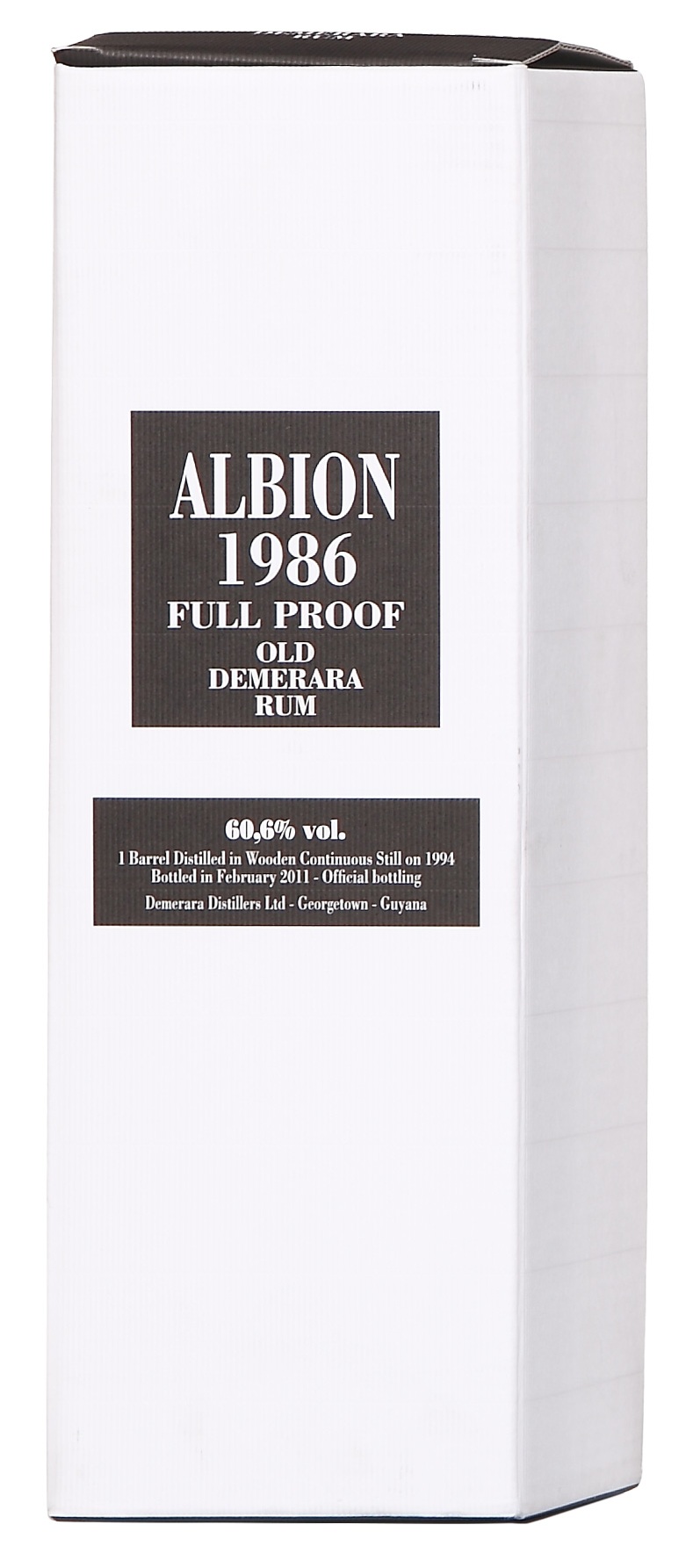 2011 was another skinny year, with only three rums being released, two of which were from Albion. Why DDL would sell off barrels of defunct distilleries like LBI, Blairmont or Albion is a curious window into their commercial mindset at the time – it’s possible that they simply didn’t see any margins in such niche products which might cost more to bring to market than they would sell for, though Velier clearly showed this was not so. Since Velier maintained a low profile outside Italy, they probably didn’t see such rums adding value to the DDL brand, and were okay letting them go. The Albion 1994 is particularly fine piece of work and I’ve heard it bruited about that 2018/2019 Release 3 of the DDL Rares will have one.
2011 was another skinny year, with only three rums being released, two of which were from Albion. Why DDL would sell off barrels of defunct distilleries like LBI, Blairmont or Albion is a curious window into their commercial mindset at the time – it’s possible that they simply didn’t see any margins in such niche products which might cost more to bring to market than they would sell for, though Velier clearly showed this was not so. Since Velier maintained a low profile outside Italy, they probably didn’t see such rums adding value to the DDL brand, and were okay letting them go. The Albion 1994 is particularly fine piece of work and I’ve heard it bruited about that 2018/2019 Release 3 of the DDL Rares will have one.
- 2011 Albion 1986 25 YO (1986 – 2011), 60.6%
- 2011 Albion 1994 17 YO (1994 – 2011), 60.4%
- 2011 Enmore 1995 16 YO (1995 – 2011), 61.2% (Cyril – DuRhum) (Henrik – RumCorner)
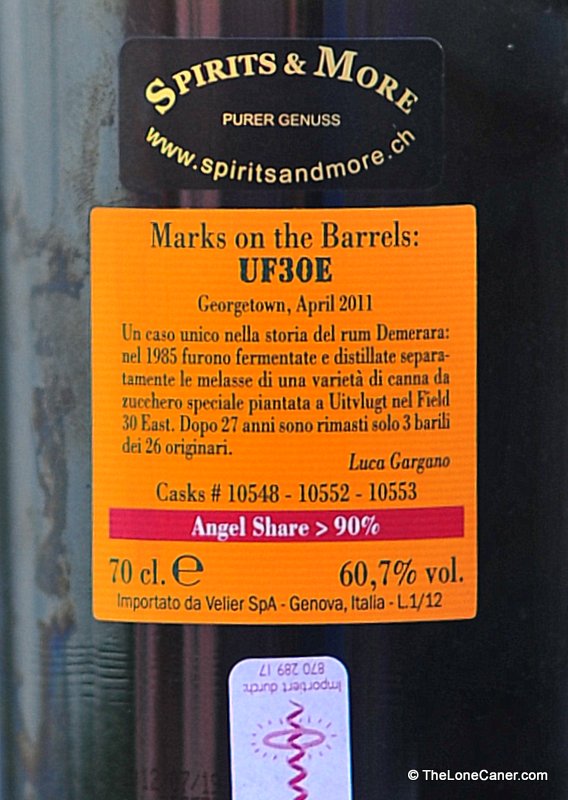 The Diamond and Port Mourant releases from the 2012 season were rums Luca liked a lot…but when he saw three barrels from Uitvlugt marked UF30E (for East Field #30 – perhaps the first incidence of parcellaire (a specific parcel of land within a terroire) ever found) he immediately snapped them up and produced 814 bottles. It remains, in the opinion of this writer, one of the best Guyanese rums ever made, perhaps even better than the Skeldon 1973. The PM 1997 was also a very very good piece of work, but could not eclipse the UF30E and it’s just a shame that I never managed to try the 30+ year old Diamond.
The Diamond and Port Mourant releases from the 2012 season were rums Luca liked a lot…but when he saw three barrels from Uitvlugt marked UF30E (for East Field #30 – perhaps the first incidence of parcellaire (a specific parcel of land within a terroire) ever found) he immediately snapped them up and produced 814 bottles. It remains, in the opinion of this writer, one of the best Guyanese rums ever made, perhaps even better than the Skeldon 1973. The PM 1997 was also a very very good piece of work, but could not eclipse the UF30E and it’s just a shame that I never managed to try the 30+ year old Diamond.
- Diamond 1981 31 YO (1981 – 2012), 60.1%
- Port Mourant 1997 15 YO (1997 -2012), 65.7%
- UF30E (Uitvlugt) 1985 27 YO (1985 – 2012), 60.7%
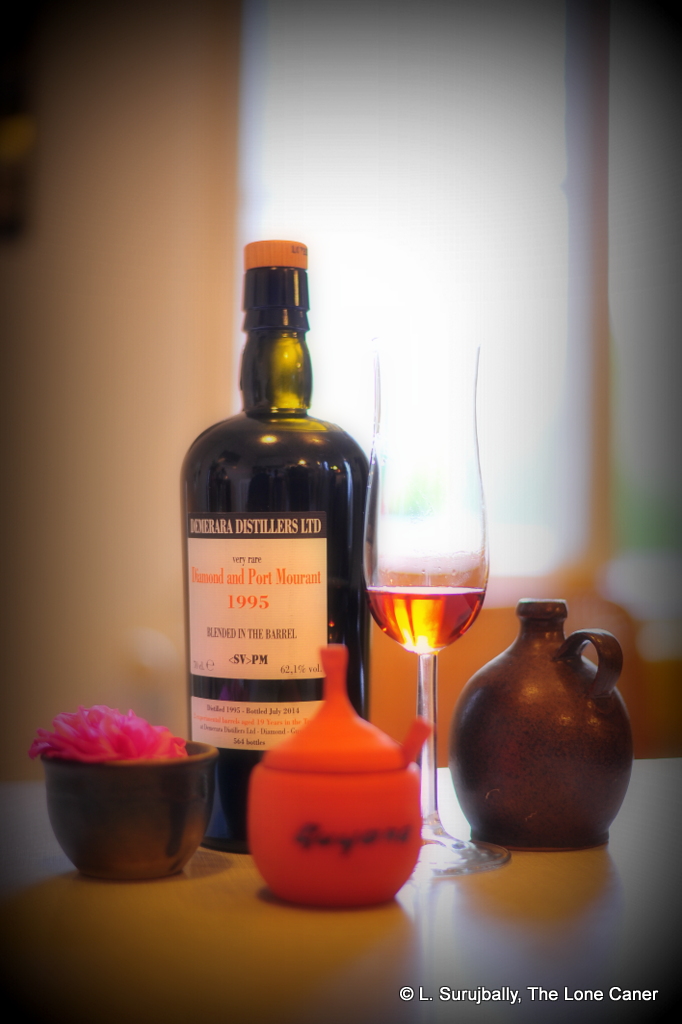 Nothing was issued in 2013 (the reasons remain obscure), and by the time the 2014 came around, things were slowing down: although we did not know it, the end was drawing nigh. While still being shown barrels to choose from, Luca felt the quality and age was no longer as spectacular as the early rums he had found just a few years before (that might be because he cleared out all the best juice already, I humorously remarked to him some years later). This led to some experimentation of various blends (Diamond-Versailles, PM-Diamond and PM-Enmore) which were positively received, but whose interesting development was never followed up on. That said, these have become as pricey and hard to find as any other of the classic Demeraras – and, reputedly, every bit as good.
Nothing was issued in 2013 (the reasons remain obscure), and by the time the 2014 came around, things were slowing down: although we did not know it, the end was drawing nigh. While still being shown barrels to choose from, Luca felt the quality and age was no longer as spectacular as the early rums he had found just a few years before (that might be because he cleared out all the best juice already, I humorously remarked to him some years later). This led to some experimentation of various blends (Diamond-Versailles, PM-Diamond and PM-Enmore) which were positively received, but whose interesting development was never followed up on. That said, these have become as pricey and hard to find as any other of the classic Demeraras – and, reputedly, every bit as good.
Diamond 1999 15YO (1999 – 2014), 53.1%
Diamond 1999 15YO (1999 – 2014), 64.1%
Uitvlugt 1996 18 YO (1996 – 2014) (Modified GS), 57.2%
Uitvlugt 1997 17 YO (1997 – 2014), 59,7%
Port Mourant / Enmore Experimental 1998 16YO (1998 – 2014), 62.2%
Port Mourant / Diamond Experimental 1995 19YO (1995 – 2014), 62.1%
Port Mourant / Diamond Experimental 1999 15 YO (1999 – 2014), 52.3.%
Diamond / Versailles Experimental 1996 18 YO (1996 – 2014), 57.9%
(Note that in 2014 and 2015, when the Velier Demeraras were beginning to become more well known, both Cyril of DuRhum and Henrik of RumCorner were starting to write about them — both described the Enmore 1995 from the 2011 season — and it was from that point that the Europeans started to sit up and take notice and prices began their climb as Velier’s reputation gained momentum.)
In late 2014 DDL’s chairman, with whom Luca had had such a sterling relationship, retired, and within months the new chairman informed him (Luca) that they themselves would be releasing “Gargano-style” rums, and the arrangement Velier had with DDL would come to an end. The rums listed above are therefore among the last ever issued by the collaboration (until the 70th Anniversary bottling in 2017, which falls outside the scope of this essay).
Nothing was released in 2015, and in 2016 Demerara Distillers came out with the Rare Collection. This led to a lot of grumbling and online vituperation – some thought it a cheap shot by DDL – but in the main, such annoyance as was expressed focused mostly around the pricing, which was felt to be exorbitant (and continues this day, with the 2018 El Dorado 12 year old wine finished editions which are also considered to be overpriced). But what the Rares did was seal the fate of the Velier Demeraras. Once those came out the door, we knew that there would never be any more.
And just like that, the Age was over.
Other Notes
- In Part III I’ll wrap up this short series by assessing the trends and impact which the Age had (at least in my opinion), and provide an epilogue.
- In 2024 Row Spirits released this article about the same range
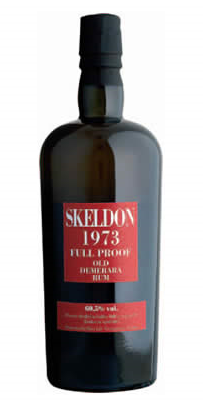
No Responses to “The Age of Velier’s Demeraras – Part 2”